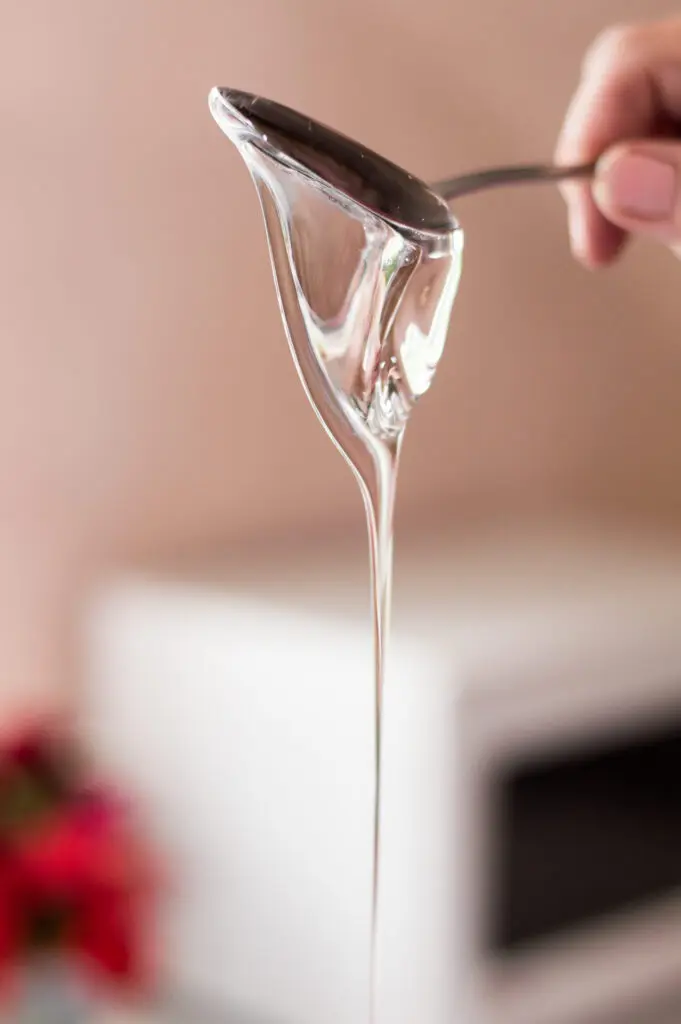Liquid Glucose syrup made is an extremely popular product in bakery and confectionery business. It has an important place in the sweet manufacturing business. It is preferred in baking for sweetening as well as for sensory attributes, such as color and texture. Since, Liquid Glucose is a non-crystallizing substance; it is commonly used in the production of homogenous confectionery like chocolates and chewing gums. This corn derived sweetener has a clean pleasant sweet taste, but is not quite as sweet as the table sugar sucrose. In addition to sweetening, some of the key functions of liquid glucose for bakers are to:
• Affect dough viscosity
• Depress freezing points of products
• Control crystallization in icings and glazes
• Promote fermentation
• Affect texture
• Promote tenderness

Liquid glucose ensures good preservative qualities, enhanced shelf life and smooth texture of the products. It tends to replace sugar in the formulation of many bakery, fondants & confectionary products:
1.) Canned fruit, jams and jellies: Glucose syrup is used to prevent crystallization of sugar in processed foods like canned fruit, jams and jellies. It helps in preserving food and saves food from getting spoiled and at the same does not increase the level of sweetness.
2.)Ice-creams: Glucose syrup has a significant role to play in ice creams; it prevents crystallization of Ice creams, adds a smooth texture and prevents it from getting melted soon. By preventing crystallization of sucrose it offers a soft mouthful, creamy touch and a homogenous sweetness to the ice cream. Glucose syrup does not add any undesirable taste and liquid glucose substitute is excellent replacement for expensive non-fat milk solids too.
3.) Drinks & Cold Beverages: The corn sweeteners enhances the taste, curbs sweetness levels & enhances shelf life of the processed drinks and beverages. In alcoholic beverages, liquid glucose syrup has the function of controlling wine maturity and sweetness.
4.) Cakes & bakery fresh products: In the baking industry, the liquid glucose syrup is indispensable to control the properties of the product. It allows the cakes, pies and biscuits to absorb water, prevent drying and extend shelf life.
Liquid glucose syrup essentially imparts texture, taste, shine and extended shelf life to the different products. Liquid glucose syrup keeps the cake soft while adding sweetness. In addition, the liquid glucose syrup prevents the biscuits from drying out, keeping the biscuits crisp and preventing the water from crystallizing in the ice cream.
5.) Candy & Chocolates: Liquid Glucose is used as a major ingredients in the hard-boiled candies and chocolates as it prevents crystallization and imparts cohesiveness.
However, liquid glucose or corn syrup is not a direct substitute for sugar and work best in baked goods when combined with other sugars. In comparison to sugar, they promote browning and are not as sweet. Bakers use dextrose or glucose syrup in biscuits, breads, rolls, cakes, cookies, crackers, doughnuts and frostings.
HL Agro is one of the seasoned manufacturers of Liquid Glucose in India. The company produces a premium range of Liquid Glucose syrups with high brix and empowers the food industries to optimize their bakery formulations, beverages and confectionery productions.
Comments
Post a Comment